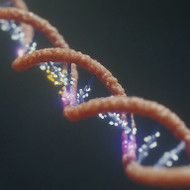How Molecular Genetics Can Assist in the Early Identification of Limb-Girdle Muscular Dystrophy Type 1A
20th Apr 2024
Overview: Muscle atrophy and progressive weakness are hallmarks of the uncommon genetic condition known as Limb-Girdle Muscular Dystrophy Type 1A (LGMD1A), which primarily affects the muscles surrounding the hips and shoulders. For effective management and intervention, early diagnosis is essential. We discuss the role that molecular genetics plays in the early identification of LGMD1A in this blog, as well as the implications that this has for doctors and patients.
Comprehending LGMD1A:
Defects in the MYOT gene, which codes for the production of the protein myotilin, result in mutations that create LGMD1A. It takes myotilin to keep muscle cells functional and structurally sound. Muscle degeneration and weakness are caused by mutations in the MYOT gene, which either produce abnormal amounts of myotilin or decrease its levels.
Diagnoses can be difficult because LGMD1A is a heterogeneous disorder with symptoms that can overlap with those of other neuromuscular disorders. Frequently employed diagnostic techniques include imaging studies, muscle biopsies, electromyography (EMG), and clinical assessment. It should be noted that molecular genetic testing is necessary because these methods might not always yield a definitive diagnosis.
Function of Molecular Genetics:
The early identification of LGMD1A is greatly aided by molecular genetic testing, including DNA sequencing. Geneticists can find mutations linked to the disorder in the MYOT gene by examining the patient's DNA. This enables accurate diagnosis, which in turn helps doctors to customize treatment regimens and give patients and their families accurate genetic counseling.
Advantages of Early Detection:
Patients can experience a number of advantages from early detection of LGMD1A. It makes it easier to start treatments on time that are meant to maintain muscle function and mobility, like physical therapy and orthopedic management. Furthermore, it facilitates the early detection of possible complications and the proactive tracking of the course of the disease, giving patients the power to make knowledgeable decisions regarding their care.
Consequences for Healthcare Professionals:
Molecular genetic testing offers medical professionals important new understandings of the underlying genetic mechanisms of LGMD1A. It allows them to provide patients with individualized care and support, as well as access to clinical trials and cutting-edge treatments that target particular genetic mutations. In addition, it makes working with genetic counselors and experts easier in order to maximize patient care and enhance results.
In summary, a major development in the field of neuromuscular disorders has been made with the early detection of Limb-Girdle Muscular Dystrophy Type 1A through molecular genetics. Through the utilization of genetic testing technologies, medical professionals can reliably diagnose the illness, promptly initiate treatment, and equip patients with the necessary knowledge to effectively manage their condition. Molecular genetics will continue to play a key role in enhancing patient outcomes and care as investigations into the complexities of LGMD1A progress.
